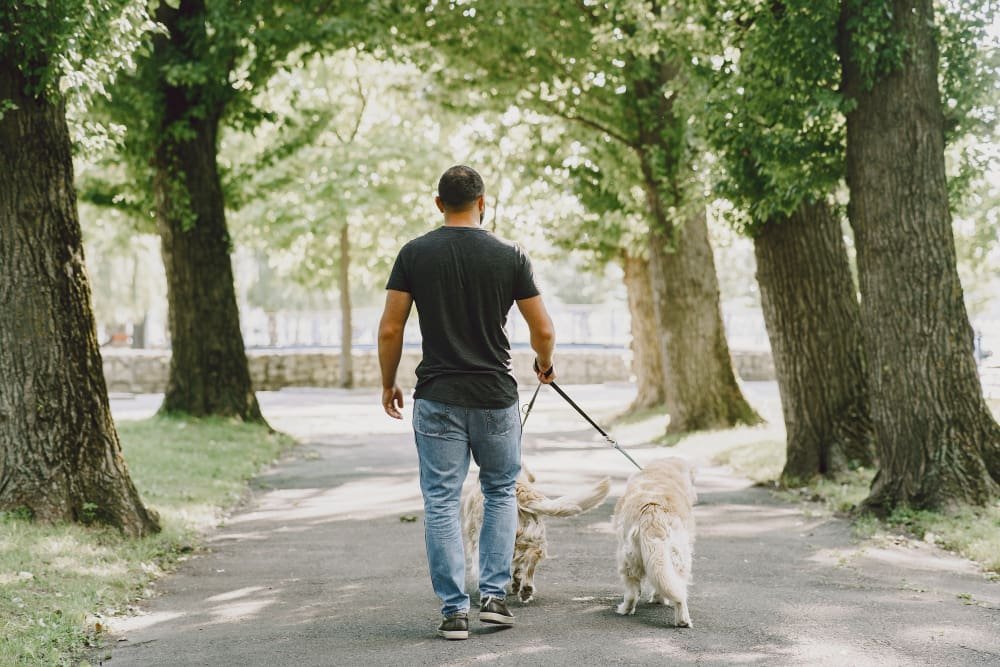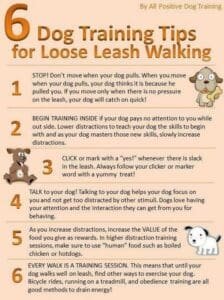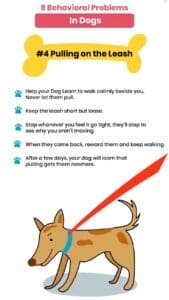Are you struggling to take your furry friend on a walk without them pulling or getting overly excited? Look no further! In this article, we will provide you with 10 essential dog training tips that will make your daily walks a breeze. From teaching your dog to walk on a loose leash to ensuring they listen to your commands, these tips will help you establish a strong bond and enjoy stress-free walks with your beloved canine companion. So grab your leash, put on your walking shoes, and get ready to transform your walking experience with your furry pal!
Setting the Foundation
Start with Basic Obedience Training
Before embarking on a successful walking routine, it is essential to lay the groundwork with basic obedience training. Teaching your dog fundamental commands such as sit, stay, and come will not only ensure their safety during walks but also make the experience more enjoyable for both of you. By setting clear expectations and boundaries right from the start, you establish a solid foundation for a well-behaved walking companion.
Establish a Routine
Dogs thrive on routine, and establishing a consistent walking schedule is crucial for their overall well-being. Determine a time that works best for you and your dog, whether it be in the morning, afternoon, or evening. A regular walking routine helps your dog anticipate and look forward to daily outings, providing a sense of structure and stability.
Choose the Right Equipment
Investing in appropriate walking equipment is essential for a safe and comfortable walking experience. Opt for a well-fitting collar or harness that allows for proper control without causing discomfort. Additionally, choose a leash that is sturdy, preferably six feet in length to give your dog enough freedom to explore while maintaining control.
Gradual Introductions
When introducing your dog to the concept of walking on a leash, it’s crucial to take it slow and make the experience positive. Start by allowing your dog to get used to wearing a collar or harness around the house before progressing to short walks in familiar surroundings. Gradually introduce more challenging environments and distractions to help your dog build confidence and adapt to various situations.
Training Techniques
Positive Reinforcement
Positive reinforcement is a highly effective training technique that encourages and rewards desired behaviors. Whenever your dog exhibits good behavior during walks, such as walking calmly beside you or responding to commands, reward them with praise, treats, or a combination of both. This positive association motivates your dog to continue exhibiting the desired behavior, making walks more pleasant for both of you.
Use Clicker Training
Clicker training is a popular method that utilizes a small handheld device to make a clicking sound, followed by a reward. By associating the sound of the clicker with positive reinforcement, you can effectively communicate and reinforce desired behaviors. This technique can be especially useful for teaching your dog specific commands or signals during walks.
Walk on a Loose Leash
Teaching your dog to walk on a loose leash is essential for a comfortable and enjoyable walking experience. Start by standing still and encouraging your dog to come close to you, rewarding them for staying by your side. As you begin walking, use treats and praise to reward your dog for maintaining a relaxed leash without pulling. Consistency and patience are key in teaching your dog to walk politely on a loose leash.
Teach Commands and Signals
Teaching your dog basic commands and signals is vital for their safety and your peace of mind during walks. Commands such as “sit,” “stay,” and “heel” are essential for managing potential hazards or distractions on the walk. Consistently practicing these commands and rewarding your dog for following them will help solidify their understanding and improve their overall behavior during walks.
Managing Distractions
Desensitize to Common Distractions
Dogs are naturally curious creatures, and the outside world is filled with enticing distractions. To prevent your dog from becoming overwhelmed or overly reactive during walks, it is crucial to gradually desensitize them to common distractions. Start by exposing your dog to mild distractions, such as passing cars or bicycles, and gradually increase the intensity as they become more comfortable and focused.
Teach Focus and Attention
Teaching your dog to maintain focus and attention on you during walks is a valuable skill that can help manage distractions. Practice exercises that encourage eye contact and engagement, such as calling your dog’s name and rewarding them when they respond promptly. By reinforcing focus and attention, you can redirect your dog’s attention away from potential distractions and maintain control in various situations.
Redirect Unwanted Behaviors
It is important to proactively address and redirect any unwanted behaviors your dog may exhibit during walks. For example, if your dog starts to pull on the leash or becomes fixated on something, calmly redirect their attention by calling their name or using a command they are familiar with. Reward them for responding positively to the redirection, reinforcing the desired behavior and minimizing the occurrence of unwanted behaviors.
Safety Precautions
Choose Appropriate Walking Areas
When selecting walking areas, consider your dog’s safety and well-being. Avoid busy streets or areas with heavy traffic and opt for quieter neighbourhoods or designated dog-friendly parks. Additionally, be mindful of any potential hazards, such as uneven terrain, toxic plants, or areas frequented by aggressive dogs. Prioritizing your dog’s safety will ensure a worry-free walking experience.
Watch Out for Hazards
While out on walks, it’s crucial to be vigilant and watch out for potential hazards. Keep an eye out for broken glass, sharp objects, or any substances that could be harmful if ingested. Be mindful of your surroundings and ensure your dog does not come into contact with anything that could pose a risk to their health and well-being.
Ensure Proper Identification
Accidents do happen, and it’s important to be prepared in case your dog becomes separated from you during a walk. Make sure your dog is equipped with an up-to-date identification tag that includes your contact information. Microchipping your dog is also an excellent additional precaution that can increase the chances of a successful reunion if they were to go missing.
Practice Leash Etiquette
Being considerate of others during walks is essential for promoting a positive walking experience for everyone. Practice proper leash etiquette by keeping your dog on a short leash when passing other people or animals. Allow ample space for others to pass and be mindful of your dog’s behavior to prevent any unnecessary interactions or discomfort for others.
Socializing and Encounters
Expose to Various Environments
To help your dog become well-rounded and adaptable, expose them to various environments during walks. Introduce them to different surfaces, sounds, and smells, gradually increasing the level of exposure over time. This exposure helps your dog build confidence and reduces the likelihood of fear or anxiety in unfamiliar situations.
Introduce to Other Dogs
Properly socializing your dog with other dogs is crucial for their development and overall behavior during walks. Seek out opportunities for controlled and positive interactions with other well-behaved dogs. This can be achieved through doggy playdates, organized group walks, or obedience classes. Socialization not only improves your dog’s behavior around other dogs but also enhances their overall walking experience.
Encountering People and Children
Walking in public spaces means encountering people, including children. Teaching your dog to be calm and well-mannered around strangers is essential for the safety and comfort of everyone involved. Encourage positive interactions with people by allowing them to offer treats or praise when your dog displays appropriate behavior. This positive reinforcement helps your dog associate strangers with positive experiences, reducing the likelihood of anxiety or reactivity.
Health and Comfort
Pay Attention to Your Dog’s Physical Condition
During walks, it’s important to monitor your dog’s physical condition. Watch for signs of fatigue, overheating, or discomfort. Allow your dog to rest and provide them with water as needed. Pay attention to their breathing, body language, and overall energy level to ensure they are not experiencing any physical distress or exhaustion.
Ensure Adequate Rest and Hydration
Proper rest and hydration are essential for your dog’s well-being during walks. Take frequent breaks, especially on longer walks, to allow your dog to rest and drink water. Be mindful of weather conditions, particularly during hot or humid days, and adjust the intensity and duration of walks accordingly. Prioritizing your dog’s comfort and hydration will help prevent exhaustion and potential health issues.
Problem Solving
Dealing with Pulling
If your dog tends to pull on the leash during walks, it’s important to address this issue to ensure a pleasant and controlled experience. One effective technique is to stop walking whenever your dog starts to pull and wait for them to return to your side. Reward them when they do so, and resume walking. Consistency and patience are key in teaching your dog to walk without pulling.
Addressing Reactivity or Aggression
If your dog displays reactive or aggressive behavior towards other dogs, people, or certain stimuli during walks, it is crucial to address this issue. Consultation with a professional dog trainer or behaviorist can provide you with guidance and techniques to manage and modify such behavior. Addressing reactivity or aggression not only improves the safety and comfort of your walks but also enhances your dog’s overall well-being.
Overcoming Fear and Anxiety
Some dogs may exhibit fear or anxiety during walks, which can be challenging for both the dog and the owner. Gradual desensitization, paired with positive reinforcement, can be effective in helping dogs overcome their fears. Start by exposing your dog to mildly fearful stimuli and gradually increase the intensity at a pace that allows them to remain comfortable. Patience, reassurance, and consistency are vital in helping your dog feel more confident and less anxious during walks.
Consistency and Patience
Be Consistent with Training
Consistency is key in dog training, especially when it comes to establishing desired behaviors during walks. Set clear expectations and consistently reinforce these behaviors. By providing your dog with a clear understanding of what is expected of them, you create a reliable and well-behaved walking companion. Remember to apply training techniques consistently and resist making exceptions, as this can lead to confusion and setbacks.
Practice Patience and Persistence
Training your dog to be a well-behaved walking companion takes time and patience. Be prepared for setbacks and moments of frustration, as every dog learns at their own pace. Celebrate small successes along the way and remain persistent in your efforts, believing in your dog’s ability to learn and improve. With patience and persistence, you can build a strong bond and create enjoyable walking experiences together.
Walking Etiquette
Clean Up After Your Dog
One of the most important responsibilities of a pet owner is to clean up after their dog during walks. Carry waste bags or other appropriate disposal methods to promptly clean up any messes your dog may make. Not only is this a courteous gesture towards others sharing public spaces, but it also helps maintain cleanliness and hygiene in the community.
Respect Other People’s Space
Respecting the personal space of others during walks is crucial, especially when passing by pedestrians, joggers, or fellow dog owners. Keep your dog on a short leash and ensure they are under control to prevent any unnecessary missteps or uncomfortable encounters. Be mindful of others’ comfort levels and maintain distance as necessary.
Ask for Consent for Dog Interactions
Not all dogs are necessarily social or comfortable interacting with other dogs. When encountering another dog during walks, it is essential to ask for consent from the other owner before allowing your dogs to interact. Not all dogs appreciate unexpected greetings, so it is important to be respectful and considerate of others’ preferences and boundaries.
Seeking Professional Help
Consider Dog Training Classes
If you find yourself struggling with training your dog to walk properly on a leash, consider enrolling in dog training classes. Professional trainers can provide expert guidance and support, tailoring training techniques to suit your dog’s specific needs. Training classes not only help improve your dog’s walking etiquette but also provide opportunities for socialization and interaction with other dogs.
Consult with a Professional Trainer
If you encounter persistent behavioral issues or challenges during walks that you are unable to address on your own, it may be beneficial to consult with a professional dog trainer or behaviorist. These experts have the knowledge and experience to address specific problems and provide customized solutions. Seeking professional help can make a significant difference in your dog’s behavior and your overall walking experience.
By following these comprehensive dog training tips for walking, you can establish a strong foundation, address behavioral challenges, and create a positive and enjoyable walking routine for both you and your furry friend. Remember, consistency, patience, and positive reinforcement are key in encouraging good behavior and fostering a strong bond between you and your loyal companion. Happy walking!



